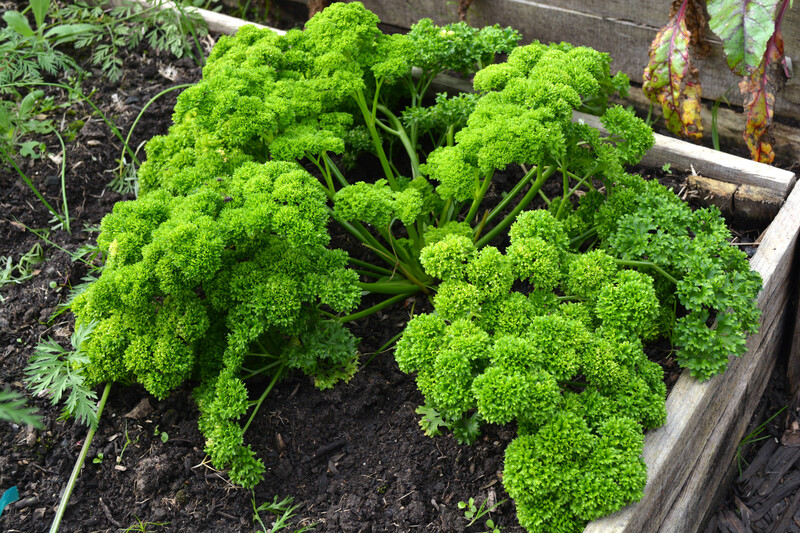Unlock the Secrets to a Drought-Tolerant Lawn This Summer
Is your once-green lawn struggling under the heat year after year? Do you wish to enjoy lush, vibrant grass without worrying about increasing water bills or local drought restrictions? If so, you're not alone--many homeowners and garden enthusiasts are seeking effective, sustainable methods to establish a drought-tolerant lawn that looks beautiful even in the hottest months. In this comprehensive guide, we'll unlock the secrets to achieving a drought-resilient lawn by exploring the best grass varieties, sustainable maintenance routines, and proven watering techniques.
Why Choose a Drought-Resistant Lawn?
Regional droughts and increasing water costs have made traditional lawns increasingly difficult to maintain. By opting for a drought-tolerant lawn, not only do you conserve precious water, but you also help the environment and save money. Drought-tolerant lawns require less maintenance, fewer chemicals, and often fare better against pests and diseases.
- Reduced Water Usage: Cut down on your water bill and help conserve a crucial resource.
- Lower Maintenance: Spend less time mowing, fertilizing, and treating.
- Year-Round Beauty: Maintain vibrant greenery even in dry, hot conditions.
- Eco-Friendly: Reduce runoff, chemical use, and your environmental footprint.

Understanding Drought-Tolerant Grasses
Selecting the right grass species is the foundation for any successful water-wise lawn. Not all grass varieties are created equal--some are inherently more capable of surviving in arid climates. Here are the top options to consider for your drought-tolerant turf:
Bermuda Grass
Known for its durability and heat tolerance, Bermuda grass is a favorite in southern and arid regions. Its deep roots help it access water far beneath the surface, making it an ideal choice for a drought resistant lawn.
Zoysia Grass
Zoysia offers a fine-to-medium blade and is exceptionally drought-tolerant once established. It forms a dense carpet that cancels out weeds and stands up well to foot traffic.
Buffalo Grass
A native prairie grass, buffalo grass is uniquely suited for dry environments. It is low-growing, soft underfoot, and thrives with minimal irrigation.
Fescue Varieties
Fescues, particularly the tall and fine fescue varieties, are known for their shade tolerance and ability to handle drought. Fine fescues require less mowing and watering, making them a win-win for busy homeowners.
The Science Behind a Drought-Resilient Lawn
What sets a drought-tolerant lawn apart from conventional grass is its root system. Deep, healthy roots are the secret to grass surviving dry spells. By following certain cultural practices, you can encourage your lawn to develop these robust roots.
- Mowing Height: Allowing grass to grow taller shades the soil, reducing moisture loss and encouraging roots to dig deeper.
- Soil Aeration: Aerating the lawn diminishes soil compaction, letting water, air, and nutrients penetrate deeply.
- Proper Fertilization: Applying slow-release, organic fertilizers helps lawns store energy for stressful conditions.
Preparing Your Yard for Summer Drought
Step 1: Soil Preparation
Begin by testing your soil's pH and nutrient content, as healthy soil forms the foundation of a robust drought-proof lawn. Amend the soil with organic matter such as compost or well-rotted manure to improve water retention and overall fertility.
- Loosen the soil up to 4-6 inches to enhance root penetration.
- Add mulch or top dressing to maintain moisture.
- Level the lawn area to avoid water pooling in low spots.
Step 2: Choosing and Planting the Right Grass
Opt for seed blends or sod products labeled "drought-tolerant" or "water-wise." Local nurseries often supply grass varieties best suited for your climate. For even greater drought resistance, consider mixing varieties to balance texture and resilience.
Step 3: Strategic Lawn Establishment
Sow seeds or lay sod in late spring or early fall, when temperatures allow roots to establish before confronting intense summer heat. Water consistently at first, then gradually reduce frequency to toughen up your new drought-resistant turf.
The Secret Watering Techniques for Drought-Resilient Lawns
Water is still a factor, even for drought-tolerant lawns. The way you water, not just how often, can make all the difference. Here's how to truly unlock your lawn's drought resistance:
- Water Deeply, Not Frequently: Soak the soil to a depth of 6-8 inches. This trains roots to grow deep, where moisture lingers.
- Early Morning Watering: Irrigate between 5-9 am to reduce evaporation and fungal risk.
- Minimize Runoff: Apply water in short cycles, allowing it to soak in rather than run off.
- Rain Sensors & Smart Sprinklers: Install technology to prevent unnecessary watering and save resources.
Pro Tip: Invest in a simple soil moisture sensor to gauge exactly when your lawn needs water.
Eco-Friendly Lawn Maintenance for Drought Resistance
Once established, your drought-tolerant lawn will still benefit from eco-conscious care that preserves water and encourages resilience:
Mow Correctly and Less Often
- Raise the Mower Blades: Taller grass cools the soil and reduces evaporation.
- Leave Grass Clippings: These return valuable nutrients and act as mulch.
Feed Responsibly
- Skip high-nitrogen fertilizers during hot weather as it can stress grass and increase water needs.
- Use compost teas or slow-release organic fertilizers in spring and early summer for steady nutrition.
Control Pests and Diseases Organically
- Diversify your landscape by mixing in native plants and groundcovers.
- Encourage beneficial insects such as ladybugs and lacewings by avoiding harmful chemicals.
Alternative Drought-Tolerant Lawn Ideas
In areas of extreme drought, homeowners are getting creative with alternatives to traditional turf. If even the best drought-resistant grass struggles in your area, consider these lush, low-water options:
- Clover Lawns: Stay green, require minimal mowing, and naturally fix nitrogen in the soil.
- Groundcovers: Sedum, creeping thyme, and purslane create a visually interesting, drought-proof "lawn."
- Decorative Mulch and Gravel: Use rockscapes and mulch beds to replace high-water sections with low-maintenance beauty.
- Ornamental Grasses: Blue grama, fountain grass, and feather reed grass add movement and style.

Frequently Asked Questions About Drought-Tolerant Lawns
Can I make my existing lawn drought-resistant?
While starting over with drought-tolerant species is most effective, you can improve an existing lawn's resilience by top dressing with compost, adjusting mowing height, and gradually lengthening watering intervals.
How long does it take to establish a drought-tolerant lawn?
With proper care, you'll see healthy, deep-rooted turf within 1-2 seasons. Patience is key--the lawn's durability pays off in the long run.
Do drought-tolerant lawns look as good as regular lawns?
Absolutely! Many modern drought-tolerant grass seeds produce lush, green lawns that are nearly indistinguishable from traditional varieties. Plus, they stay greener longer in tough weather.
Are there any downsides to drought-tolerant lawns?
The main challenge is in initial establishment since deep roots take time to develop. Some varieties, like buffalo grass, may go dormant and turn brown during extreme drought, but will bounce back when moisture returns.
Conclusion: Enjoy a Beautiful, Water-Conserving Lawn All Summer
Unlocking the secrets to a drought-tolerant lawn this summer isn't just about planting the right grass--it's about nurturing deep roots, choosing eco-friendly maintenance routines, watering wisely, and embracing local climate conditions. Whether you're replacing your old lawn or improving what you already have, the steps outlined above will lead to a sustainable, vibrant yard you can be proud of--even in the driest weather.
Ready to get started? Embrace the change to a drought-resistant landscape and reap the rewards season after season. Your wallet, your community, and the planet will thank you.
Further Resources
Transform your landscape this summer--and enjoy a thriving, drought-tolerant lawn for years to come!


